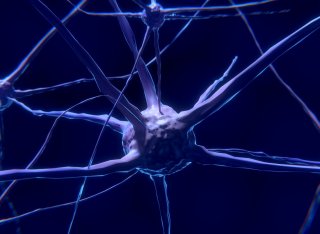
Dr Sebastiano Massaro
Academic and research departments
Surrey Business School, Centre of Digital Economy, Surrey Institute for People-Centred Artificial Intelligence (PAI), Future of Work.About
Biography
Sebastiano is Associate Professor (Reader) at the Surrey Business School, a faculty member of the Centre of Digital Economy, Centred of Future of Work and a Surrey Fellow at the Institute for People-Centred Artificial Intelligence.
Before joining Surrey, he co-directed the Global Research Priority in Behavioural Science of the University of Warwick, where he worked as an Assistant Professor of Behavioural Science at the Warwick Business School. A pioneer in the field of Organizational Neuroscience, Sebastiano has co-founded and chaired the Interest Group in Organizational Neuroscience (NEU) at the Academy of Management.
Sebastiano was awarded the inaugural PhD in Management Science from the UCL School of Management and he also graduated in Neuroscience at the University of Trieste and the International School of Advanced Studies, and in Neuroimaging at the University of Edinburgh.
Sebastiano’s research has been published in top-journal across fields, such as Nature Biotechnology, The Lancet, Journal of Personality and Social Psychology, and Organizational Research Methods, among others. His research is theoretically and methodologically focused on mapping the scholarly boundaries of the emerging field of organizational neuroscience; empirically, he investigates the interplay between affect and cognition in various kinds of decision-making, such as moral, interpersonal, and strategic; his context of choice is healthcare, where he applies AI methods.
Sebastiano has received several awards for both his teaching and research and his work has appeared in several international media.
Areas of specialism
My qualifications
Previous roles
Affiliations and memberships
News
ResearchResearch interests
organizational neuroscience; behavioral science; research methods; healthcare
Indicators of esteem
2023 Conference Chair, Organizational Neuroscience Conference, AOM NEU & Rotterdam School of Management, Erasmus University Netherlands.
2019-present External Examiner (MBA/EMBA Programmes), London Business School
Editorial Board Member
Scientific Reports (IF = 4.99)Sensors (IF = 3.57)
Awards and Prizes (selected)
2022 Best Symposium Award, Research Methods/NEU Division, Academy of Management
2021 Early Career Achievement Award, NEU, Academy of Management
2021 Best Symposium Award, NEU, Academy of Management
2017 Best International Paper Award, Healthcare Management Division, Academy of Management
2017 Carolyn B. Dexter Award nominee, Academy of Management
2016 Fellow of the UK Higher Education Academy
Research interests
organizational neuroscience; behavioral science; research methods; healthcare
Indicators of esteem
2023 Conference Chair, Organizational Neuroscience Conference, AOM NEU & Rotterdam School of Management, Erasmus University Netherlands.
2019-present External Examiner (MBA/EMBA Programmes), London Business School
Editorial Board Member
Scientific Reports (IF = 4.99)Sensors (IF = 3.57)
Awards and Prizes (selected)
2022 Best Symposium Award, Research Methods/NEU Division, Academy of Management
2021 Early Career Achievement Award, NEU, Academy of Management
2021 Best Symposium Award, NEU, Academy of Management
2017 Best International Paper Award, Healthcare Management Division, Academy of Management
2017 Carolyn B. Dexter Award nominee, Academy of Management
2016 Fellow of the UK Higher Education Academy
Supervision
Postgraduate research supervision
I am interested to hear from prospective PhD students whose interests are aligned with my research interests. Examples of current and complete PhD students are:
PhD students currently supervised at the Surrey Business School:
Thamer AlAnazi
Zainab Alsayed
Giuseppe Bongiorno (Visiting PhD student)
PhD graduates:
Dr. Reema Naik
Dr. Eugene Tay
Dr. Tim Siu Wan
Dr. Alina Gutoreva
Dr. Alessandro Castagnetti
Teaching
Sebastiano's teaching in 2022/23 is:
Leadership and Management (MSc - MANM484)
Advanced Quantitative Methods II (PhD - MAND031)
Publications
Highlights
Cohen-Chen, S., Brady, G. L., Massaro, S., & van Kleef, G. A. (2022). Meh, whatever: The effects of indifference expressions on cooperation in social conflict. Journal of Personality and Social Psychology, 123(6), 1336–1361. https://doi.org/10.1037/pspi0000392
Massaro, S., Drover, W., Cerf, M. & Hmieleski, K.M. (in press). Using functional neuroimaging to advance entrepreneurial cognition research. Journal of Small Business Management. https://10.1080/00472778.2020.1824527
Scarpazza, C., Zangrossi, A., Huang, Y., Sartori, G., & Massaro, S. (2022). Disentangling Interoceptive Abilities in Alexithymia. Psychological Research, 86, 844–857.
Massaro, S., & Lorenzoni, G. (2021). Nanomedicine: A Socio-Technical System. Technological Forecasting & Social Change, 173(10), 121066
Massaro, S., & Pecchia, L. (2019). Heart Rate Variability (HRV): A Methodology for Organizational Neuroscience. Organizational Research Methods, 22(1), 354-393.
Tay, E., Vlaev, I., Massaro, S. (2022). The Behavioral Factors that Influence Person-centered Social Care: A Literature Review and Conceptual Framework. International Journal of Environmental Research and Public Health, 19(70), 4334.
Nikolaou, V., Massaro, S., Fakhimi, M., & Garn, W. (2022). Using Machine Learning to Detect Theranostic Biomarkers Predicting Respiratory Treatment Response. Life, 12(6), 775.
Tay, E., & Massaro, S. (2020). A behavioural understanding of patient involvement in healthcare. British Journal of General Practice
Porumb, M., Iadanza, E., Massaro, S., & Pecchia, L. (2020). A Convolutional Neural Network Approach to Detect Congestive Heart Failure. Biomedical Signal Processing and Control, 55(1), 101597. https://doi.org/10.1016/j.bspc.2019.101597
Nikolaou, V., Massaro, S., Fakhimi, M., Stergioulas, L., & Price, D. (2020). COPD phenotypes and machine learning cluster analysis: A systematic review and future research agenda. Respiratory medicine, 171, 106093 https://doi.org/10.1016/j.rmed.2020.106093
Nikolaou, V., Massaro, S., Garn, W., Fakhimi, M., Stergioulas, L., Price, D. (2021). The Fast Decliner Phenotype of Chronic Obstructive Pulmonary Disease (COPD): Applying Machine Learning for Predicting Lung Function Loss. BMJ Open Respiratory Research, 8(1).
Nikolaou, V., Massaro, S., Garn, W., Fakhimi, M., & Stergioulas, L. (2021). COVID-19 diagnosis from chest X-rays: Developing a simple, fast, and accurate neural network. Health Information Science and Systems, 9(36).
Nikolaou, V., Massaro, S., Garn, W., Fakhimi, M., Stergioulas, L., & Price, D. (2021). The Cardiovascular Phenotype of Chronic Obstructive Pulmonary Disease (COPD): Applying Machine Learning to the Prediction of Cardiovascular Comorbidities. Respiratory Medicine, 186, 106528.





